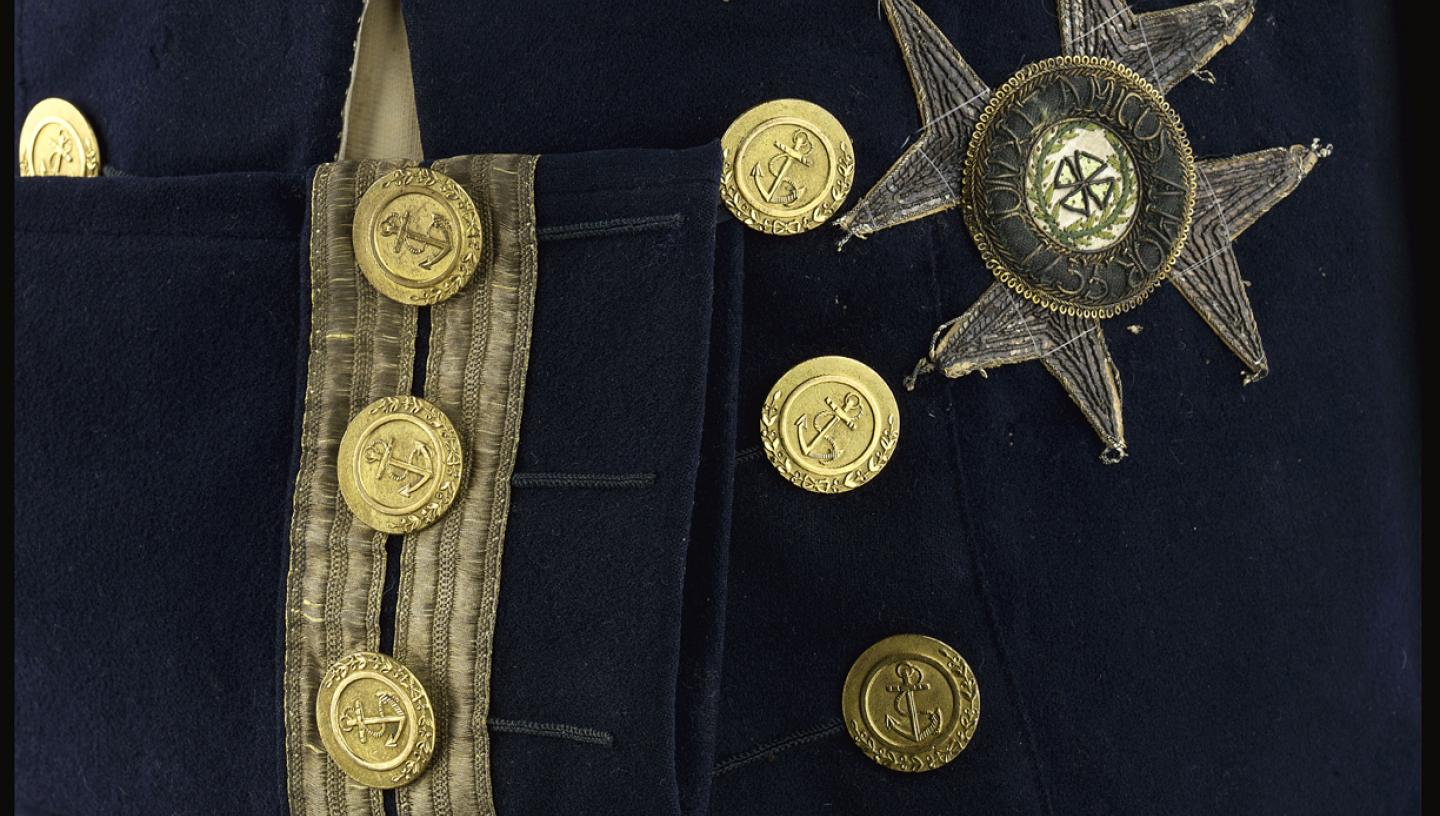
Naval distinction lace
The gold lace on naval officers’ uniforms has traditionally be used to indicate rank. But what are its origins?
Distinction lace – or ‘gold rings’ – on the cuffs of naval officers’ uniforms evolved from the highly decorative gold embroidery or gold lace that adorned Royal Navy officers’ uniforms when they were first introduced in 1748.
The uniforms of senior naval officers at this time were distinguished by the amount of gold decorating the fronts and skirts of the coat, the cuff and the pocket flaps – the more elaborate the decoration, the higher the rank. Junior officers' coats were not trimmed with gold.
Gold embroidery to denote rank
In 1783, the full-dress uniform of flag officers were embroidered with gold in the same pattern as that worn by army generals, and their rank was shown on the cuffs as follows:
Admirals: three rows of embroidery
Vice-Admirals: two rows of embroidery
Rear-Admirals: one row of embroidery
By 1795, flag officers wore distinction lace on the sleeves of dress and undress uniforms. Captains and commanders also had cuff lace indicative of their standing: two rows for captains and one for commanders. ‘Epaulettes’ (ornamental shoulder pieces) to denote rank were also introduced in 1795.
The amount of lace used on full dress reduced over the years, and in 1856 distinction lace was worn only on coat cuffs. This was also the year when the 'curl' on the upper row of cuff lace was introduced for executive officers’ uniforms, to distinguish them from officers of the civil branch. From 1918 onwards, the 'curl' was worn by all branches.
Our Royal Naval uniforms collections
A number of uniforms are available to view online.
The National Maritime Museum collection includes uniforms worn and owned by the famous including Admiral Nelson, Edward VII, 1st Earl Beatty and Admiral John Arbuthnot Fisher. The collection of over 7000 items contains non-uniform garments and wigs such as that of Admiral Cornwallis. The oldest uniforms are of the first pattern, introduced in 1748. Another item of particular interest is a Captain’s full dress coat of the 1774 pattern as worn by Captain James Cook in the famous portrait painted by Nathaniel Dance between 1775 and 1776.
View our Royal Navy collection


